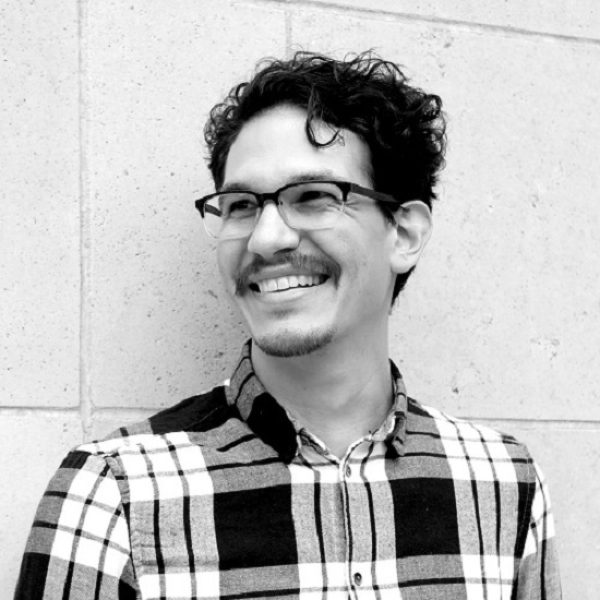Jonathan Dessi-Olive

The future is fungi
Associate Professor of Architecture in Building Technology + Design Integration
Jonathan Dessi-Olive is fascinated with the ways we can use mushrooms to create more sustainable structures.
“Conventional architecture is a problem. It is responsible for about 40% of all CO2 emission on the planet. So how we do things and how you see them mostly isn’t ‘right’ necessarily to me.” Dessi-Olive explains, “It’s easy, it’s cheaper, developers will want to go for it, but there is an incredible amount of waste and emission that happens in the way that we build today.”
Much of Dessi-Olive’s career has been devoted to the research of mycelium, a vegetative body of fungus that exists as a root-like structure under organisms such as mushrooms. This material has the ability to bind cellulosic material, which is an organic compound found in plants like the hemp Dessi-Olive uses, to create a substance that can be used in architecture.
“What we’re looking for is for this thing to basically bind this cellulosic material together quickly and then we dry it out. Once the mushroom root system has gone through all of the different materials holding them together, what you get is something like styrofoam. It’s super lightweight, it’s kind of hard, and you can shape it into anything you want.”
For Dessi-Olive, “anything you want” involves pushing the limits of this material to create structures bigger than anything previously done.
“In my lab,” Dessi-Olive begins, “the MycoMatters Lab, we’re asking those questions at what we consider the biggest scale, which is architecture. We ask this question of how do myco-materials enter into the building at building scale?”
Dessi-Olive’s fascination for architecture began before he even realized. “I’ve always been interested in engineering history. Even in high school, I did a project on a dome in Florence, Italy. I was just enamored with the mystery of how in the Renaissance did they make the biggest span possible. That kind of bug kept finding me, from researching domes in high school to then being in an architecture program and pursuing a Bachelor of Science. I was able to find domes again.”
Dessi-Olive earned a Bachelor of Science in Architecture from the University of Minnesota, followed by a Master of Science (SMArchS) from the Massachusetts Institute of Technology (MIT) in Design Computation, a Master of Architecture (MArch) from the University of Pennsylvania. As he became fully immersed in the world of architecture, it wasn’t just the content that interested him, but the people as well.
“What happened in architecture was that there was this sense of community amongst the students that was inherent to how hard the work is or the way that problems and assignments are given to you,” Dessi-Olive says. “So there was that communal aspect that really drew me into the field. It’s inherently collaborative. There’s this companionship and this comradery that happened in the field and that is existent in the field. Collaboration and relationships are fundamental to the work.”
Dessi-Olive completed his first big “mushroom” installation in 2018, while doing a post graduate fellowship at Georgia Tech.
“We made a big pavilion. It was for a barbershop quartet. We grew two tons of mushrooms into a pavilion.”
Since that project, he has gone on to create bigger and grander structures out of mycelium. He established the MycoMatters Lab, a research facility for creating fungi based architecture. Recently, he and his students have created some of the biggest work yet for mycelium research.
“This spring we did this project called ‘Phoenix’. It’s a 20-foot by 20-foot sculpture of mycelium (pictured below). It’s the size of a house. We’re not making buildings yet, but we are making things that are the size of buildings.” The project is currently on display at the Charlotte Art League, and is being submitted for awards nationally. (Learn more about mycellium research and the development of “Phoenix” in this YouTube video.)

In terms of where mycelium research is headed, Dessi-Olive looks forward to the challenge.
“I am eternally optimistic. My plan for the future is to keep asking questions about this material and see where it falls off. For me, I’m not really obsessed with the mushroom. I’m obsessed with what the mushroom can offer us in terms of a sustainable future.”